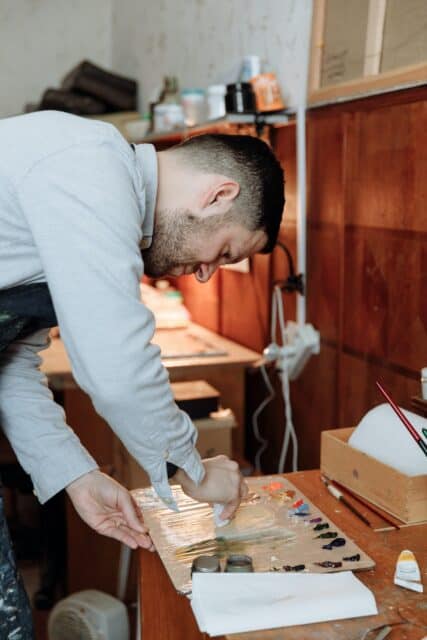
How to judge a piece of custom artwork.

This is a common question that our clients ask us. Most people will only buy custom artwork once, it is a major expenditure and they need to know that they’re getting quality work.
When commissioning custom artwork, ensuring its quality is crucial. Evaluating the craftsmanship and artistry of the piece can help you make an informed decision and receive a masterpiece that exceeds your expectations. In this blog post, we will provide practical and professional advice on how to judge the quality of custom artwork, enabling you to make a confident choice.
-
Technical Proficiency: A key factor in judging custom artwork is the artist’s technical proficiency. Look for precise brushwork, clean lines, and meticulous attention to detail. Assess their ability to capture proportions accurately and create realistic textures. A skilled artist demonstrates mastery in their chosen medium, displaying confidence and expertise.
-
Composition and Visual Impact: Consider the composition and visual impact of the artwork. Evaluate how well the elements are arranged, the use of color, and the overall balance. Look for a clear focal point and a well-thought-out arrangement of visual elements. A strong composition draws the viewer’s eye and creates a captivating visual experience.
-
Attention to Detail and Execution: Quality custom artwork showcases a high level of attention to detail. Examine how well the artist captures intricate features, textures, and subtle nuances. The execution should be precise, with careful consideration given to each element. Assess the accuracy of proportions, the smoothness of transitions, and the overall level of refinement.
-
Originality and Artistic Expression: Evaluate the artwork’s originality and artistic expression. Look for a unique perspective or a distinct artistic style that sets it apart. A good artist goes beyond technical skill and infuses their work with personal creativity and individuality. Consider whether the artwork evokes emotions or tells a story, as this reflects the artist’s ability to convey their vision.
-
Material Quality and Preservation: Consider the materials used in creating the artwork. Inquire about the quality and archival properties of the materials, such as the canvas, paper, and paints. Ensure that they are of professional-grade, as this contributes to the longevity and preservation of the artwork. High-quality materials ensure that your investment will withstand the test of time. When assessing oil paints for quality, watch out for signs such as poor color pigment leading to dullness, weak coverage requiring multiple layers, inconsistent texture, low lightfastness causing fading, weak binder leading to cracking, limited colour range, and difficulty in mixing. Investing in high-quality oil paints ensures vibrant colours, good coverage, consistent texture, durability, and a wider range of options for your artistic expression.
Assessing the quality of custom artwork requires a discerning eye and an understanding of key factors. By evaluating the artist’s technical proficiency, composition, attention to detail, originality, and the quality of materials, you can make an informed judgment. Remember, quality goes beyond aesthetics; it encompasses the artist’s skill, creativity, and ability to evoke emotions. By considering these aspects, you can confidently select custom artwork that will bring you joy and admiration for years to come.
- Croesus5040
- May 29, 2023